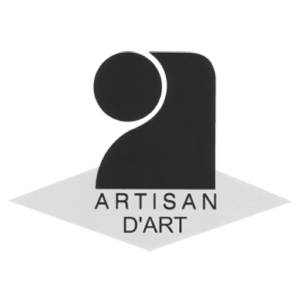Our services
Restoration workshop
In our workshop, we can fully restore your piano.
Your piano no longer has the brilliance of its youth, it is worn by time. Vital parts of your instrument are damaged, broken or missing, we can provide solutions. Restoration is part of our core business as an artisan.
In our workshop, we can completely restore your piano and intervene on all the elements of the instrument while respecting its origin, its materials and its age.
The three parts of the piano on which we intervene are:
- the harmonic structure
- mechanical keyboard assembly
- a piece of furniture

We have been recognized as craftsmen by the Chambre Métiers et de l’Artisanat des Hauts de France.
All our restorations and repairs are guaranteed for 5 years parts and labor.
At the heart of the piano
The harmonic structure
This is the set of strings, frame, soundboard and pintable: it is the soul of the piano.
The soundboard
The sound of the piano comes from the soundboard and each piano has a unique sound.
The soundboard, which is made of spruce, must be protected from thermal and hygrometric variations otherwise it ends up splitting. The sound is then altered and loses length and dynamics. Cracks are repaired with shims.
The work consists of dismantling all the strings and pins, removing the cast iron frame to access the central part of the piano. This table must then be completely sanded in order to be wood against wood for shimming. This operation consists of digging a furrow at the location of the slot to adjust a custom-made shim. This restores homogeneity to the table and a tension necessary for its good resonance. This table must then be protected by a varnish that we carry out ourselves, respecting old methods and using products that respect the environment.
The pintable
It is the part hidden behind the pins that keeps them in tension. The pintable is often in beech or maple plywood. When the pinning really does not hold the tuning of the piano any more, it is necessary to change the pintable.
The frame
The frame is cast iron. Its role is to maintain the enormous tension that exists in a piano. The tension can vary between 18 and 24 tons. It must not have undergone any shock in its life to be optimal. Its restoration is essentially aesthetic: gilding, varnish and harmonic markers.
The strings
They are made of tempered steel, thin in the treble and spun in the bass, that is to say wrapped in copper. It is important in the restoration to respect the densities of steel according to the period of the piano. Softer steel in the 19th century, bass strings in brass or copper, blued or chromed pegs. The quality of the strings is very important, because they contribute to the sound of the piano.
At the heart of the piano
The keyboard/mechanical assembly
The setting of the piano (keyboard and/or mechanics) is very important, because it ensures the pianist the touch and the comfort of play.
A finely tuned piano is much more precise in expressing nuances, bringing out melodic lines, providing assistance to the pianist’s playing. A badly tuned piano loses its dynamic potential, can go so far as to give the pianist the impression that the instrument is bad.
The settings of the keyboard-mechanical assembly can be made both on site and in the workshop.
Adjusting the keyboard of your piano means first and foremost straightening it, that is to say removing the play between the keyboard and the action (by the pilot) and ensuring that the surface of your keyboard is flat. Then key by key, we adjust the depth of each.
Tuning the mechanics mainly concerns the hammer. It’s about sending it bouncing off the ropes, with the right attack (the escape), the right bounce (the catch), and the right repetition. Everything must obviously be free of play and well aligned.
At the heart of the piano
Restoration of furniture
The restoration of a piano is also the restoration of its furniture. We work just as well on modern pianos (polyester or polyurethane varnish) as on old pianos (buffer varnish).
On modern furniture, we can clean the original varnish or completely redo it when the marks are important. The fittings (hinges, pedals) are also completely overhauled.
On old furniture, there is first a work of cabinetmaking (repair of moldings, veneers and marquetry) then a work of varnisher (stripping of the old varnish and application of a varnish with a buffer) with shellac and alcohol.
All these preparations are “homemade” in the workshop.


